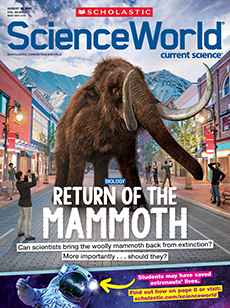For many students across the U.S., winter brings the possibility of a snow day! Heavy snowfall can cover sidewalks and make roads dangerous, forcing schools to close. Students then get to stay home to sip hot chocolate, go sledding, and have snowball fights!
For snow to fall, local conditions must be just right. Snow forms in clouds when temperatures hit or dip below 0°C (32°F)—water’s freezing point. As droplets of water turn from liquid to solid, their molecules arrange into a repeating pattern, creating six-sided crystals. But snowflakes won’t start piling up unless temperatures near the ground are similarly cold. If it’s too warm, the precipitation will ultimately fall as sleet or freezing rain.
For many students across the U.S., winter could bring a snow day! Heavy snowfall can cover sidewalks and make roads dangerous. That forces schools to close. Then students get to stay home. They can sip hot chocolate, go sledding, and have snowball fights!
Local conditions must be just right for snow to fall. Snow forms in clouds at or below 0°C (32°F). That’s water’s freezing point. As droplets of water turn from liquid to solid, their molecules arrange into a repeating pattern. This creates six-sided crystals. But temperatures near the ground must also be cold or snowflakes won’t pile up. If it’s too warm, sleet or freezing rain will fall instead.

